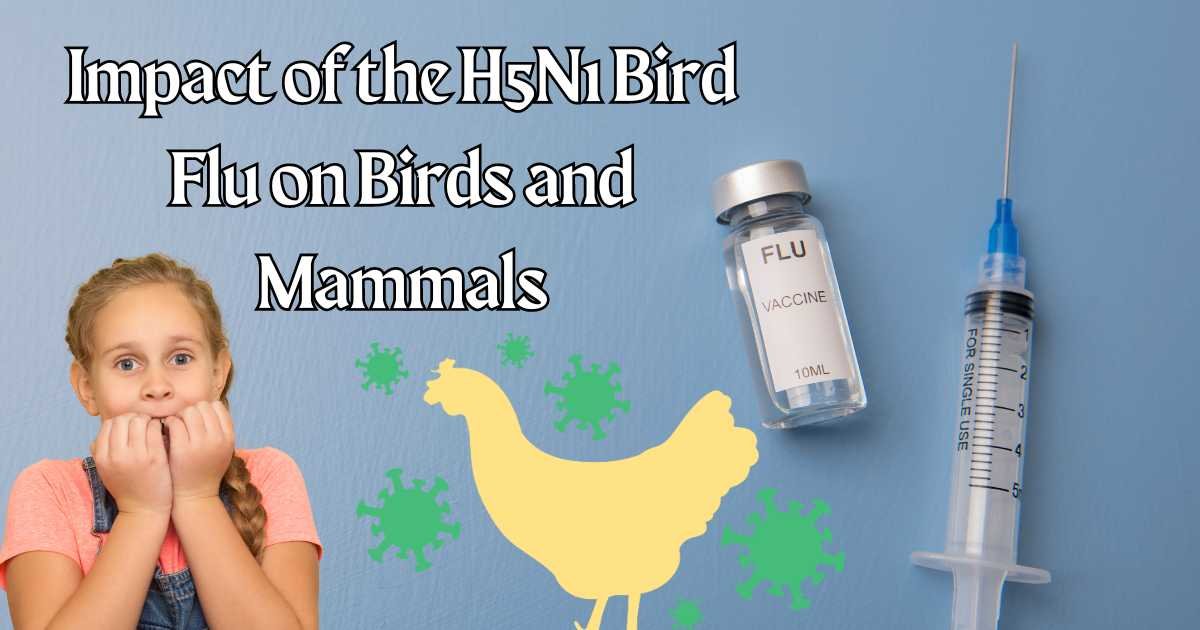The highly pathogenic H5N1 bird flu poses an existential threat to birds and mammals across the world. Since emerging in China in 1996, the virus has continued to evolve and spread globally, infecting over 150 avian species and dozens of mammals.
Table of Contents
H5N1: Spread and Impact on Birds
- H5N1 has now spread to over 80 countries and infected over 100 different bird species
- Commercial poultry farms have been most severely impacted, with millions of chickens and turkeys culled in an effort to contain outbreaks
- For example, a 2015 outbreak in the USA led to the destruction of over 50 million birds
- The virus has also devastated populations of certain wild bird species:
- Thousands of gulls and terns died in Europe in 2021
- At least 21 endangered California condors died in the USA in 2023, nearly 6% of the total population
- Waterfowl like ducks can carry H5N1 without getting sick, facilitating spread
"First Great Skuas began dying across islands in Scotland in summer 2021, then thousands of geese and other species died across the UK over the next two winters."
- Royal Society for the Protection of BirdsFirst Cases in Mammals
- H5N1 has now jumped to mammals like foxes, bears, and mink
- Marine mammals have been most devastated:
- Over 20,000 seal deaths in Peru and Chile
- Thousands of elephant seal pup deaths in Argentina
- Humans rarely get infected but risk is deadly due to high viral load
| Mammal | Reported H5N1 Outbreaks |
|---|---|
| Seals | Mass deaths on US east and west coastsThousands of South American elephant seals dead95% mortality in elephant seal pups in Argentina |
| Sea lions | Over 20,000 dead in Chile and Peru |
| Mink | Outbreaks on mink farms in Spain and Finland |
| Bears/foxes | Cases reported in bears and foxes in North America |
What’s Causing the Outbreaks?
The exact factors behind the global spread are still uncertain but leading theories point to:
- Climate change: Rising temperatures may be altering bird migration patterns and species interaction in ways that propagate contagion
- Warmer oceans: Increased sea surface temperatures can reduce fish stocks, in turn weakening marine mammal immunity
“We need urgent policies to both restrict poultry farming risks and curb emissions that drive climate change and ocean warming.” – International Wildlife Health Consortium
Read Also: A Close Look at the Strikingly Stylish 2025 Toyota Camry
Ongoing Monitoring and Future Outlook
- Health organizations are collaborating to track and study outbreaks globally
- Work is underway to develop vaccines for poultry, wild birds, and mammals
- But huge challenges remain in containing a virus prevalent in migratory species
- Climate change and environmental shifts will continue to elevate future risk
The H5N1 crisis demands immediate action and long-term vigilance. As the virus penetrates mammalian populations, the threat level soars. All countries must prioritize outbreak preparedness and surveillance.




